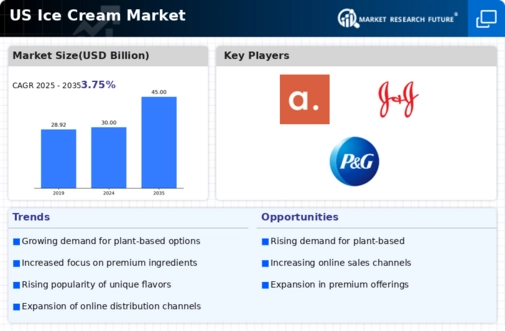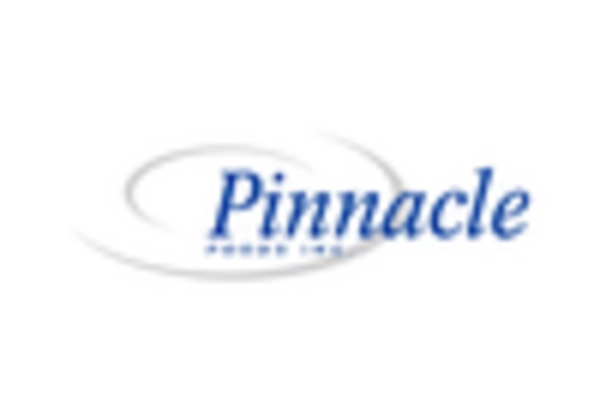E-commerce Growth
The rise of e-commerce is transforming the ice cream market, providing consumers with unprecedented access to a wide variety of products from the comfort of their homes. Online sales channels are expanding, allowing brands to reach a broader audience and cater to changing shopping habits. Recent data shows that online sales of ice cream have increased by over 20% in the last year, driven by convenience and the ability to explore diverse offerings. As more consumers turn to online shopping for their ice cream needs, brands that invest in robust e-commerce strategies are likely to thrive in the competitive landscape of the ice cream market.
Healthier Alternatives
The demand for healthier alternatives is reshaping the ice cream market, as consumers become more health-conscious and seek options that align with their dietary preferences. This includes low-calorie, low-sugar, and dairy-free varieties that cater to various dietary restrictions. Recent statistics indicate that the market for healthier ice cream options has grown by approximately 15% in the past year, reflecting a significant shift in consumer behavior. Brands that successfully innovate and offer these alternatives are likely to capture a larger share of the market, appealing to health-focused consumers while maintaining the indulgent experience associated with traditional ice cream.
Innovative Flavor Profiles
The ice cream market is experiencing a surge in innovative flavor profiles, driven by consumer demand for unique and adventurous tastes. Manufacturers are increasingly experimenting with unconventional ingredients, such as exotic fruits, spices, and even savory elements. This trend is not merely a passing fad; it reflects a broader shift in consumer preferences towards more diverse and exciting culinary experiences. According to recent data, approximately 30% of consumers express a willingness to try new flavors, indicating a robust market for these innovative offerings. As brands continue to push the boundaries of flavor, the ice cream market is likely to see a significant increase in sales, particularly among younger demographics who are more open to trying novel products.
Sustainability Initiatives
Sustainability initiatives are becoming a pivotal driver in the ice cream market, as consumers increasingly prioritize environmentally friendly practices. Brands are adopting sustainable sourcing for ingredients, reducing packaging waste, and implementing energy-efficient production methods. A recent survey indicates that around 40% of consumers are willing to pay a premium for products that are sustainably produced. This shift not only aligns with consumer values but also enhances brand loyalty and market share. Companies that effectively communicate their sustainability efforts are likely to gain a competitive edge in the ice cream market, appealing to eco-conscious consumers and potentially increasing their overall sales.
Seasonal and Limited-Edition Offerings
The ice cream market is witnessing a growing trend towards seasonal and limited-edition offerings, which create a sense of urgency and exclusivity among consumers. Brands are launching special flavors tied to holidays, events, or even collaborations with popular brands, enticing consumers to make purchases before the products disappear. This strategy not only boosts short-term sales but also fosters brand engagement and excitement. Data suggests that limited-edition flavors can increase sales by up to 25% during promotional periods. As consumers seek novelty and unique experiences, the ice cream market is likely to benefit from this trend, driving both brand loyalty and revenue.

















Leave a Comment